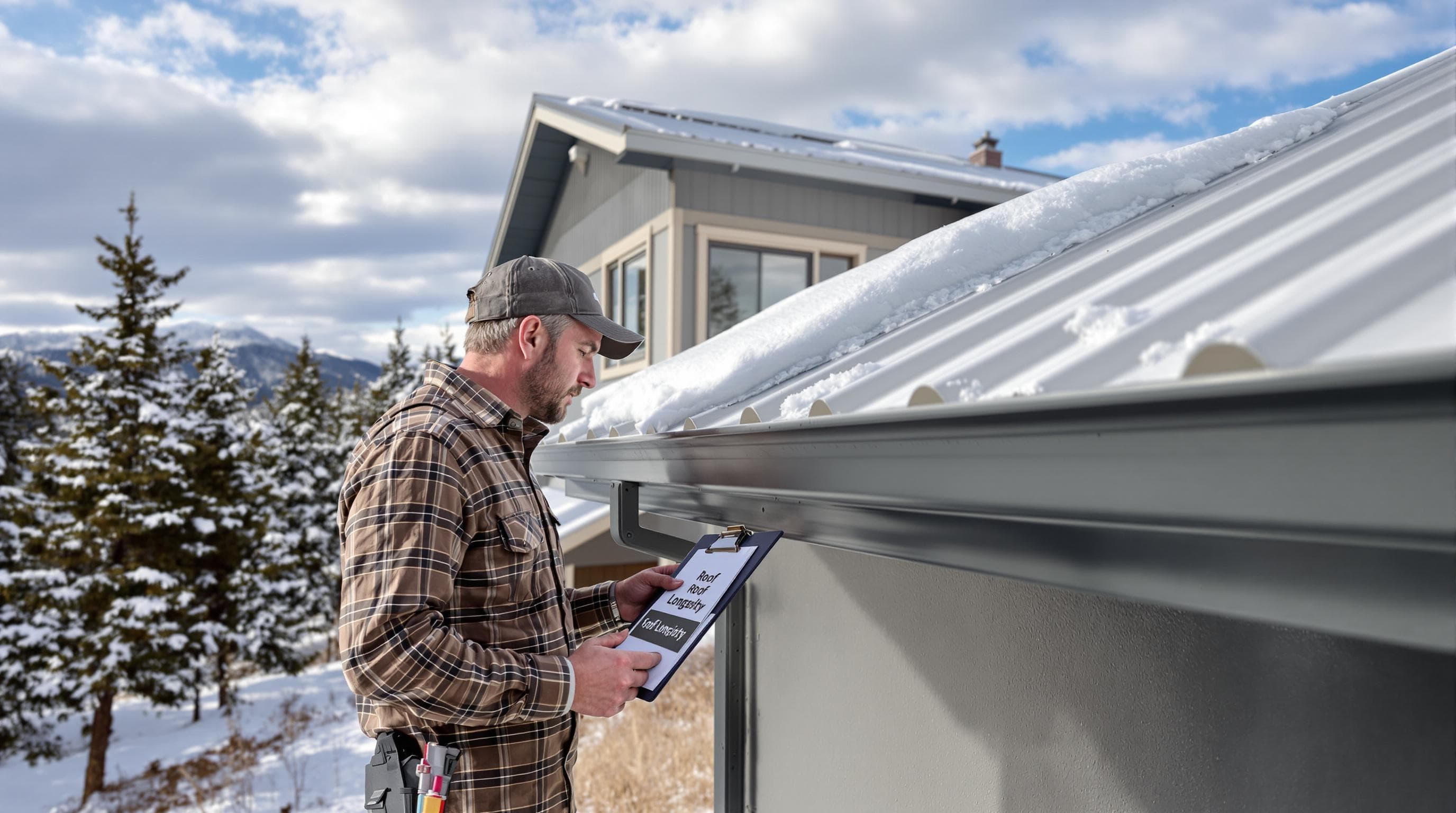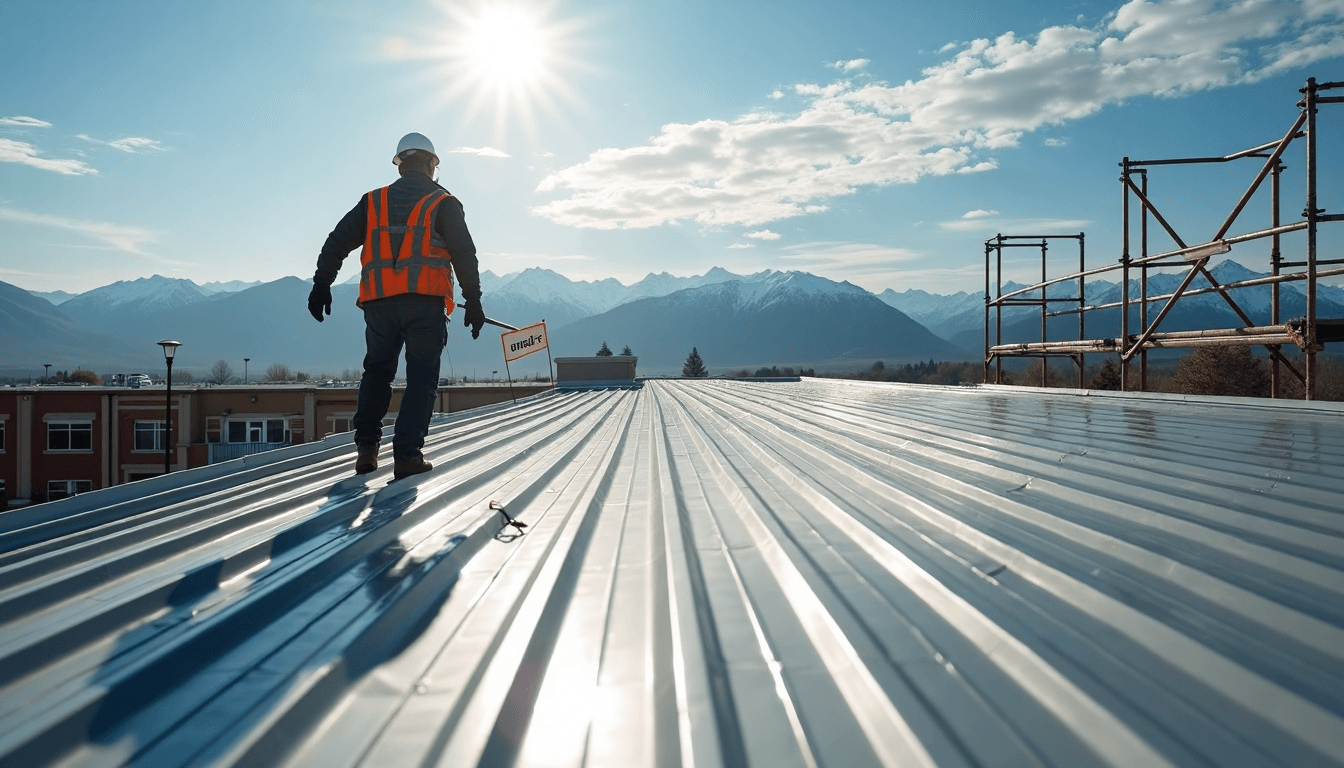Solar Installation Process in Helena: Complete 2025 Guide
Contact Us
Solar Installation Process in Helena: Complete 2025 Guide
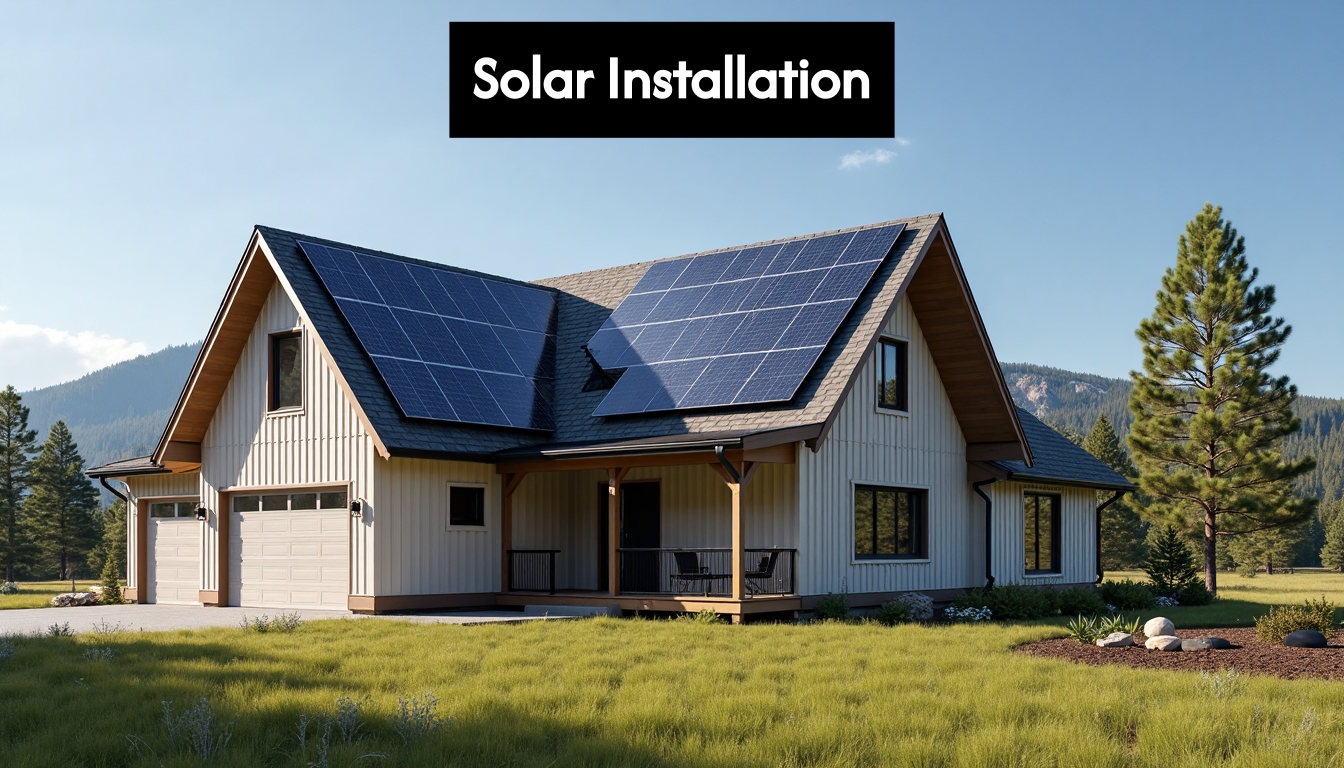
Solar installation in Helena MT is ramping up fast, with local projects now offsetting up to 92 percent of annual household energy use using a 12.6 kW solar panel system. Most people expect the hard part to be the panels themselves or the unfamiliar weather conditions. The real surprise is how much of the process hinges on detailed planning, rigorous site evaluations, and navigating complex permits before a single panel ever goes up. The hidden steps and local rules behind Helena’s solar boom might just catch you off guard.
Table of Contents
Quick Summary
| Takeaway | Explanation |
|---|---|
| Comprehensive Site Evaluation is Crucial | Conducting a thorough initial assessment can identify solar potential, optimal panel placement, and installation challenges specific to your property. |
| Understand Local Regulatory and Financial Landscape | Knowledge of Helena’s local permitting requirements and available financial incentives, including rebates and tax credits, is essential for successful project implementation. |
| Engage Experienced Local Professionals | Choosing contractors with expertise in local climate and installation best practices ensures systems are designed for durability and efficiency in Helena’s unique conditions. |
| Maintain Detailed Documentation for Insurance | Keeping comprehensive records of installation details and correspondence with insurance providers is vital for navigating potential claims related to solar installations. |
| Project Management is Key for Success | Effective project coordination and management can streamline the solar installation process and enhance the overall success of both residential and commercial projects. |
Key Steps in the Solar Installation Process
Transitioning from understanding solar energy’s potential to actual implementation requires a structured approach. The solar installation process involves multiple precise stages that ensure your system is designed, installed, and operational with maximum efficiency and safety.
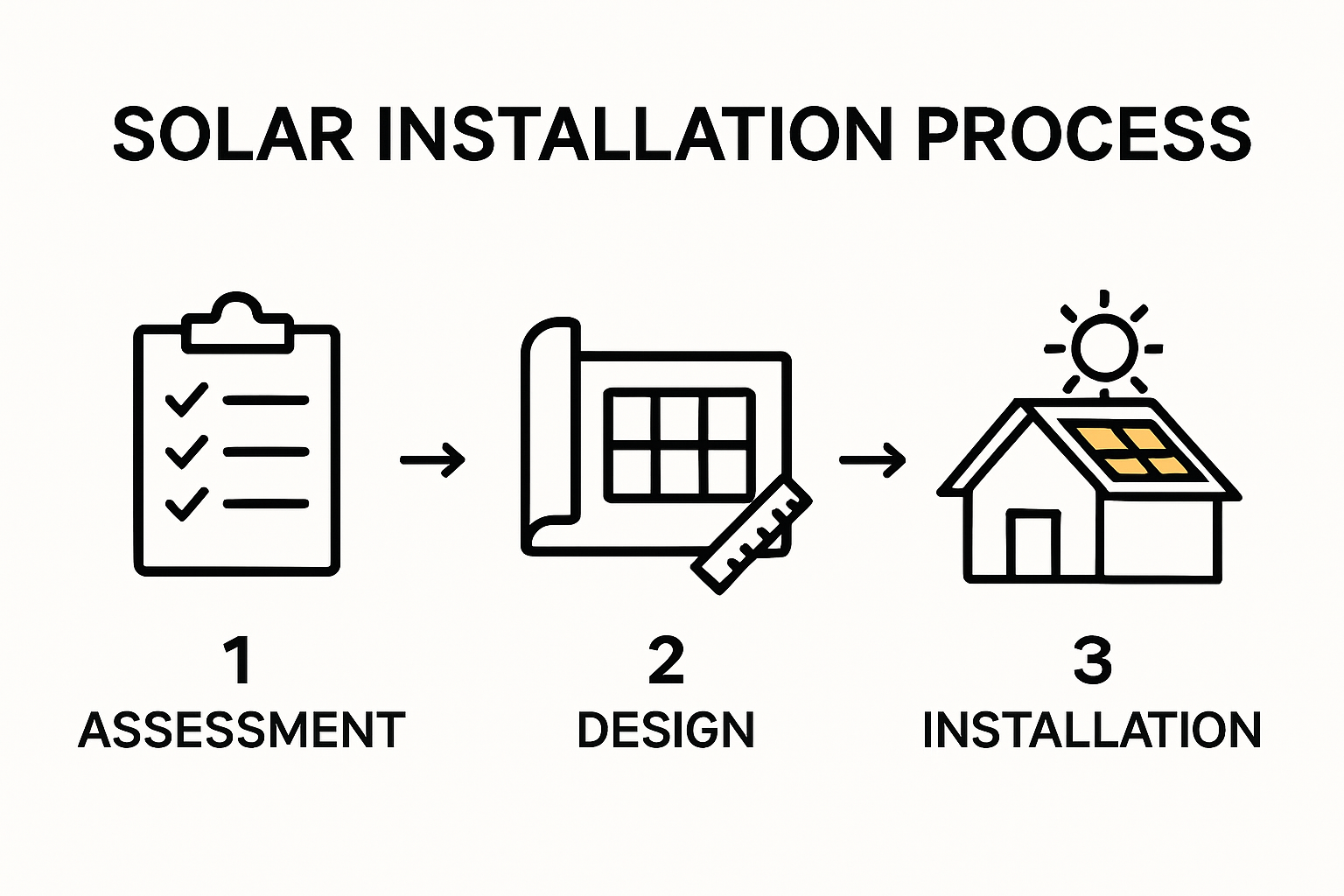
Initial Assessment and Site Evaluation
Before any panels touch your roof, professionals conduct a comprehensive site evaluation. This critical first step determines your property’s solar potential. Experts will assess roof condition, orientation, shading patterns, and structural integrity. According to Syncarpha’s Solar Project Development Guide , a thorough site assessment helps identify optimal panel placement and potential installation challenges.
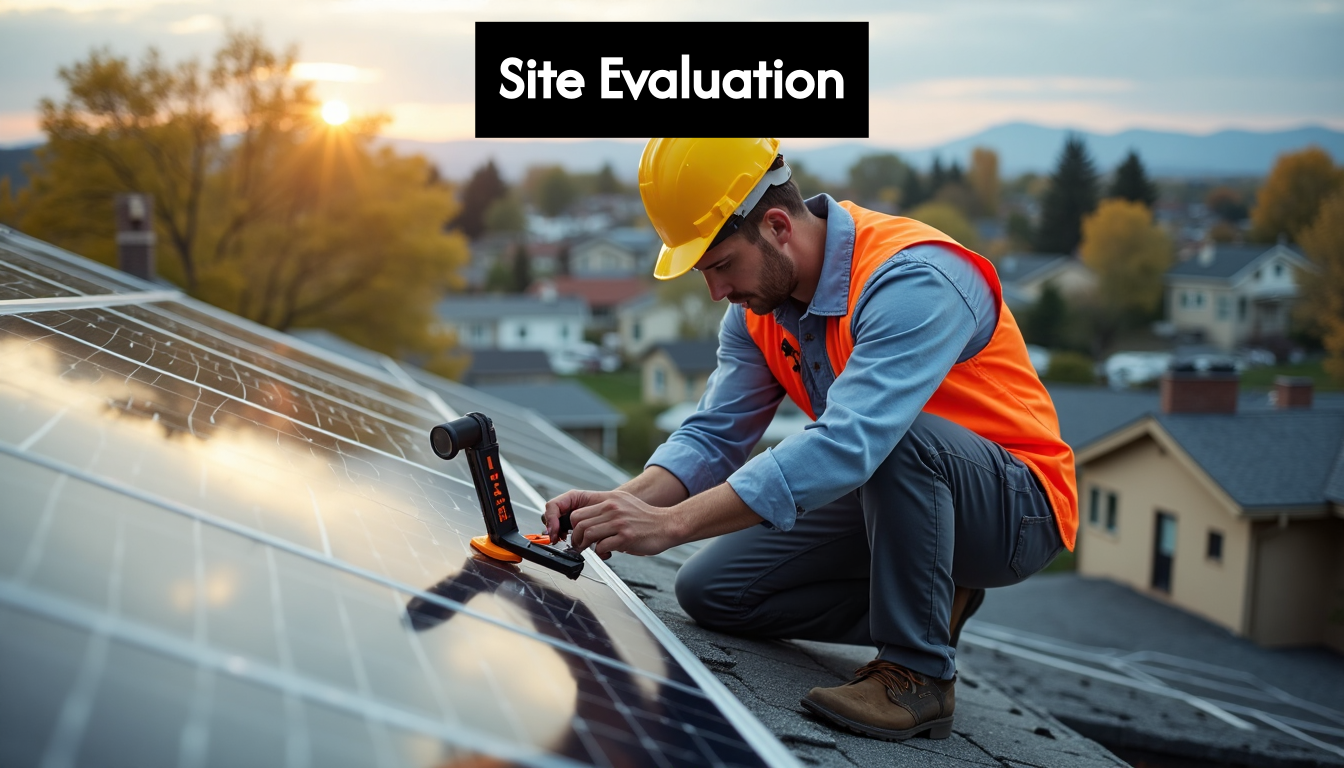
During this phase, technicians will measure your roof’s solar exposure, analyze historical energy consumption, and evaluate electrical infrastructure. They’ll create detailed measurements and 3D modeling to predict potential energy generation. This data helps determine the number of panels needed and potential energy output specific to your Helena property.
Design and Permitting Process
After the initial assessment, solar professionals develop a customized system design. This stage involves creating precise technical drawings, selecting appropriate equipment, and developing a comprehensive installation plan. As Electronic Finance’s Solar Installation Guide highlights, this process requires careful engineering to maximize energy efficiency.
The permitting process follows system design. In Helena, this involves submitting detailed plans to local authorities for review and approval. Professionals will handle documentation for building permits, electrical permits, and grid interconnection agreements. They’ll ensure all designs meet local building codes, zoning regulations, and utility company requirements.
Installation and Final Commissioning
The actual installation represents the culmination of careful planning. According to PFNexus Solar Project Development Insights , this stage involves several critical substeps:
- Mounting Structure Preparation : Precise positioning of racking systems to maximize sunlight exposure
- Panel Installation : Secure mounting of photovoltaic panels with exact spacing and alignment
- Electrical Wiring : Professional interconnection of panels, inverters, and electrical systems
- Grid Connection : Establishing safe and compliant connection to local electrical infrastructure
After physical installation, a rigorous commissioning process begins. Technicians conduct comprehensive performance tests, verify safety protocols, and ensure the system meets all regulatory standards. This final inspection guarantees your solar installation operates at peak efficiency and safety.
Choosing experienced local professionals who understand Helena’s unique environmental conditions is crucial. Each step in the solar installation process requires precision, expertise, and a deep understanding of both technical requirements and local regulations.
Local Considerations for Helena and Montana Projects
Solar installations in Helena and Montana require specialized approaches that account for unique regional challenges and opportunities. Understanding local environmental, regulatory, and financial landscapes is crucial for successful solar project implementation.
Climate and Geographic Considerations
Helena’s distinctive mountain climate presents both challenges and advantages for solar energy projects. The region experiences significant temperature variations and potentially harsh winter conditions that impact solar system design. City of Helena sustainability reports reveal that local solar projects must be engineered to withstand temperature extremes ranging from below zero to over 90 degrees Fahrenheit.
Solar panel positioning becomes critical in Montana’s terrain. Professionals must carefully analyze roof angles, potential snow accumulation, and seasonal sun exposure. Unlike southern states with consistent sunlight, Helena’s solar installations require precise engineering to maximize energy generation during shorter winter daylight hours while maintaining durability against potential heavy snow loads.
Regulatory and Financial Incentives
Navigating Montana’s solar regulatory environment requires specialized knowledge. According to local energy research , homeowners typically need a 12.6 kW solar panel system to offset up to 92 percent of their annual energy consumption. However, the complex permitting and incentive landscape demands expert guidance.
Financial incentives play a significant role in making solar projects economically viable. Local projects have benefited from substantial rebates, such as Northwestern Energy’s $57,000 incentive for municipal solar installations. Homeowners can leverage various state and federal tax credits, net metering policies, and potential property tax exemptions for solar investments.
Local Installation Best Practices
Successful solar projects in Helena MT require partnering with contractors who understand regional specifics. Local installation teams must possess deep knowledge of:
- Structural Assessment : Evaluating roof integrity specific to Montana’s building standards
- Weather Resistance : Designing systems that withstand extreme temperature fluctuations
- Grid Integration : Navigating local utility interconnection requirements
- Seasonal Performance : Optimizing panel placement for maximum year-round energy generation
The City of Helena has demonstrated commitment to solar energy, with municipal projects like the Bill Roberts Golf Course solar array generating 80 percent of facility energy needs and saving approximately $11,000 annually. This local leadership provides a blueprint for residential and commercial solar adoption.
Choosing solar professionals with proven local experience becomes paramount. They can provide nuanced insights into Helena’s unique solar landscape, ensuring your investment delivers optimal performance and long-term sustainability. Understanding these local considerations transforms solar installation from a generic process to a precisely tailored energy solution for Montana homeowners.
Solar Installation Tips for Builders and Property Managers
Builders and property managers play a crucial role in advancing solar energy adoption. Strategic planning, understanding regulatory requirements, and implementing best practices can transform solar installations from complex projects to seamless value-added investments.
Comprehensive Project Planning
Successful solar installations begin with meticulous pre-construction planning. SolSmart’s Construction Guidelines emphasize the importance of comprehensive project coordination. Builders must develop a holistic approach that integrates structural assessment, electrical infrastructure evaluation, and precise system design.
Property managers should conduct thorough site evaluations that go beyond basic solar potential. This includes analyzing building orientation, roof structural integrity, potential shading issues, and long-term maintenance considerations. Advanced 3D modeling and thermal imaging can provide detailed insights into optimal panel placement and potential energy generation.
Regulatory Compliance and Permitting
Navigating Helena’s complex permitting landscape requires specialized knowledge and proactive communication. According to local regulatory guidelines , successful solar projects demand well-informed installers and collaborative relationships with local regulatory agencies.
Key permitting considerations include:
- Building Code Alignment : Ensuring solar installations meet local structural and electrical standards
- Utility Interconnection : Coordinating grid connection requirements
- Inspection Readiness : Preparing comprehensive documentation for municipal review
- Safety Compliance : Implementing rigorous safety protocols throughout installation
Project Execution and Management
Adopting a single-source approach can significantly streamline solar installation processes. Advanced Solar Installation Strategies recommend consolidating design, procurement, and construction under one experienced entity to minimize communication challenges and ensure consistent quality control.
Property managers should prioritize partnerships with solar installation teams that demonstrate:
- Technical Expertise : Proven experience with complex solar projects
- Local Knowledge : Understanding of Helena’s unique environmental conditions
- Comprehensive Service : End-to-end project management capabilities
- Ongoing Support : Maintenance and performance monitoring services
The most successful solar installations result from collaborative approaches that blend technical expertise with strategic project management. Builders and property managers who invest time in understanding solar technology, local regulations, and long-term performance metrics can transform solar from a simple infrastructure upgrade to a significant value-adding investment.
Ultimately, solar installations represent more than an energy solution. They are a strategic investment in property value, sustainability, and future-proofing building infrastructure. By approaching these projects with careful planning, regulatory awareness, and professional execution, builders and property managers can unlock significant economic and environmental benefits.
Navigating Insurance Claims and Exterior Remodeling
Exterior remodeling projects involving solar installations present unique insurance challenges that require strategic planning, comprehensive documentation, and proactive risk management. Understanding the intricate relationship between insurance coverage and solar technology is crucial for homeowners and property managers in Helena.
Understanding Solar-Related Insurance Complexities
Solar installations introduce specialized insurance considerations beyond traditional exterior remodeling projects. Solar Insurance Specialists emphasize that proper documentation becomes the cornerstone of successful insurance claims. This includes maintaining detailed records such as itemized invoices, comprehensive before and after photographs, service reports, and manufacturer documentation.
Insurance claims for solar systems are particularly nuanced. Typical homeowners insurance might not automatically cover solar panel installations, requiring specific policy endorsements or separate coverage. Property owners must work closely with insurance providers to ensure complete protection against potential equipment damage, performance issues, and liability risks associated with solar technology.
Liability and Risk Management
Contractors and property owners face complex liability exposures in solar installations. According to RPS Insurance Insights , solar projects demand coverage that extends beyond general liability. This includes professional liability and potential pollution liability protections.
Key risk management strategies include:
- Comprehensive Documentation : Maintaining meticulous records of installation processes
- Compliance Verification : Ensuring adherence to state and federal incentive program requirements
- Professional Certification : Working with licensed and insured solar installation professionals
- Regular System Inspections : Conducting periodic assessments to identify potential risk factors
Claims Processing and Recovery
Photovoltaic Technology Experts highlight that solar-related insurance claims can be particularly complex. Business interruption losses can sometimes exceed physical damage costs, especially when considering extended equipment replacement timelines. Inverters and specialized panels might have lead times approaching 12 months, significantly impacting potential recovery periods.
Efficient claims processing typically requires:
- Immediate documentation of damage
- Comprehensive photographic evidence
- Detailed repair or replacement cost estimates
- Professional assessment reports
- Prompt communication with insurance providers
The typical claims resolution process ranges from 7 to 10 business days when all required documentation is promptly and accurately submitted. However, solar-specific claims may require more extensive review due to the specialized nature of the technology.
Helena property owners should view solar installations as sophisticated investments requiring strategic insurance planning. By understanding the unique risks, maintaining comprehensive documentation, and working with insurance professionals who specialize in renewable energy technologies, homeowners can protect their solar investments and ensure smooth claims processes.
Ultimately, successful insurance navigation for solar and exterior remodeling projects demands proactive communication, meticulous record-keeping, and a deep understanding of the evolving renewable energy landscape.
Frequently Asked Questions
What are the key steps in the solar installation process in Helena?
The solar installation process in Helena includes three main steps: initial assessment and site evaluation, design and permitting, and installation with final commissioning. Each phase is critical for ensuring efficiency and safety.
How can I evaluate my property’s solar potential before installation?
You can evaluate your property’s solar potential by conducting a comprehensive site assessment that includes analyzing the roof’s condition, orientation, shading patterns, and structural integrity. Consulting with local solar professionals can provide detailed insights.
What local regulations should I be aware of when installing solar in Helena?
In Helena, you’ll need to navigate specific local permitting requirements, building codes, and electrical regulations. It’s essential to work with experienced contractors who understand the local regulatory landscape to ensure compliance.
Are there financial incentives available for solar installations in Helena?
Yes, there are financial incentives available, such as state and federal tax credits, rebates, and potential property tax exemptions for solar installations. Familiarizing yourself with these options can significantly reduce the overall cost of your solar project.
Start Your Helena Solar Journey with Confidence – The Local Experts Are Here
Tackling a solar installation in Helena MT brings unique challenges—from complex site evaluations to navigating local permits and insurance hurdles. The article laid out how thorough planning and attention to detail make or break your project, especially with Montana’s unpredictable climate and strict energy codes. Homeowners like you want a seamless experience, reliable guidance, and maximum return on your investment. Your roof’s strength, compliance with local rules, and coordinated exterior upgrades are essential for a long-lasting solar solution.
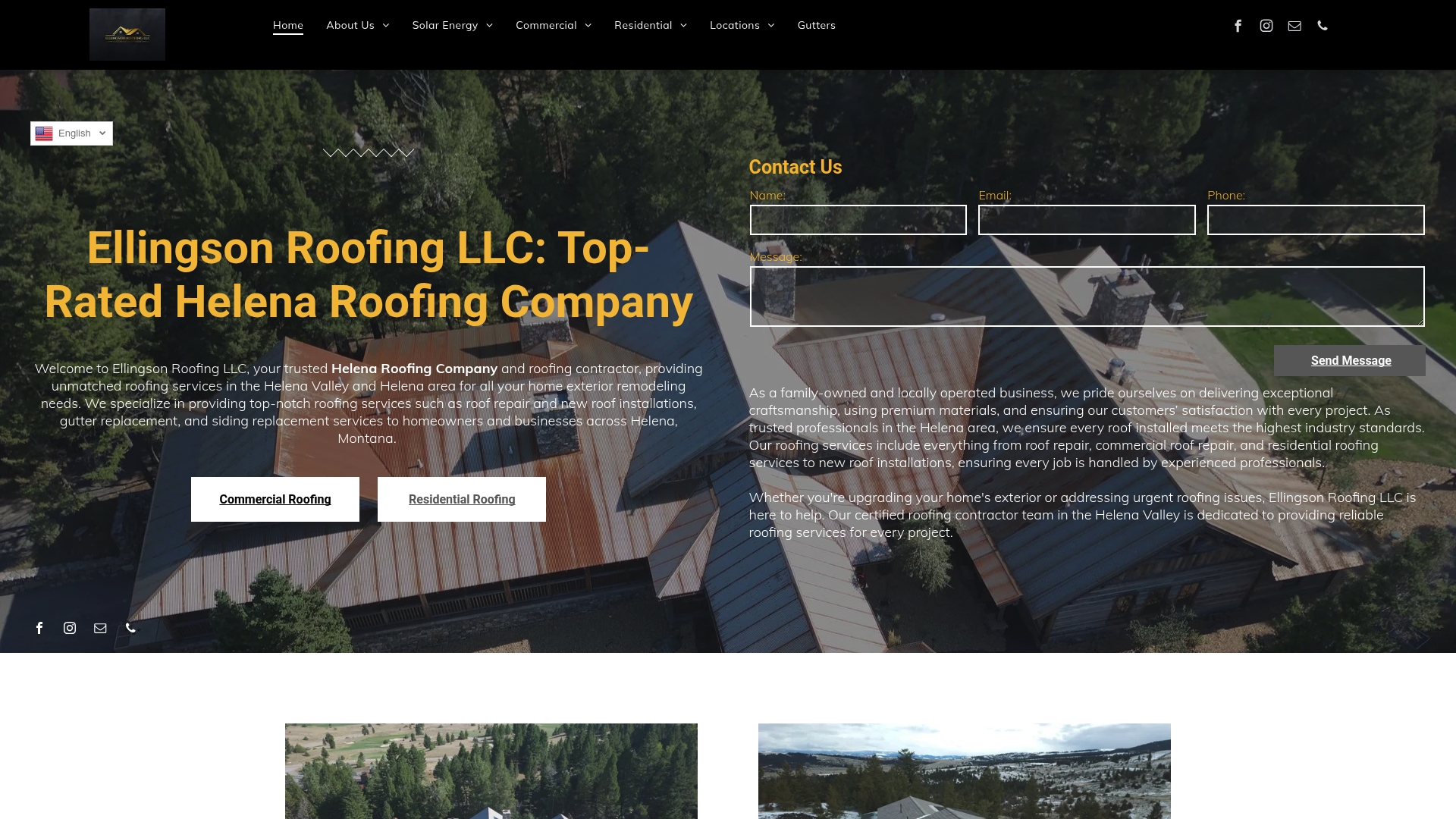
Why take on the stress alone when you can partner with a trusted local team that understands every step? At Ellingson Roofing LLC , we blend years of roofing, siding, and solar expertise to ensure your system stands up to Helena’s harshest conditions. Get comprehensive assessments, full insurance documentation support, and solar installations customized for your property—all under one roof. Visit our main site to request your free estimate now, and secure a solar future built on strength and peace of mind.



